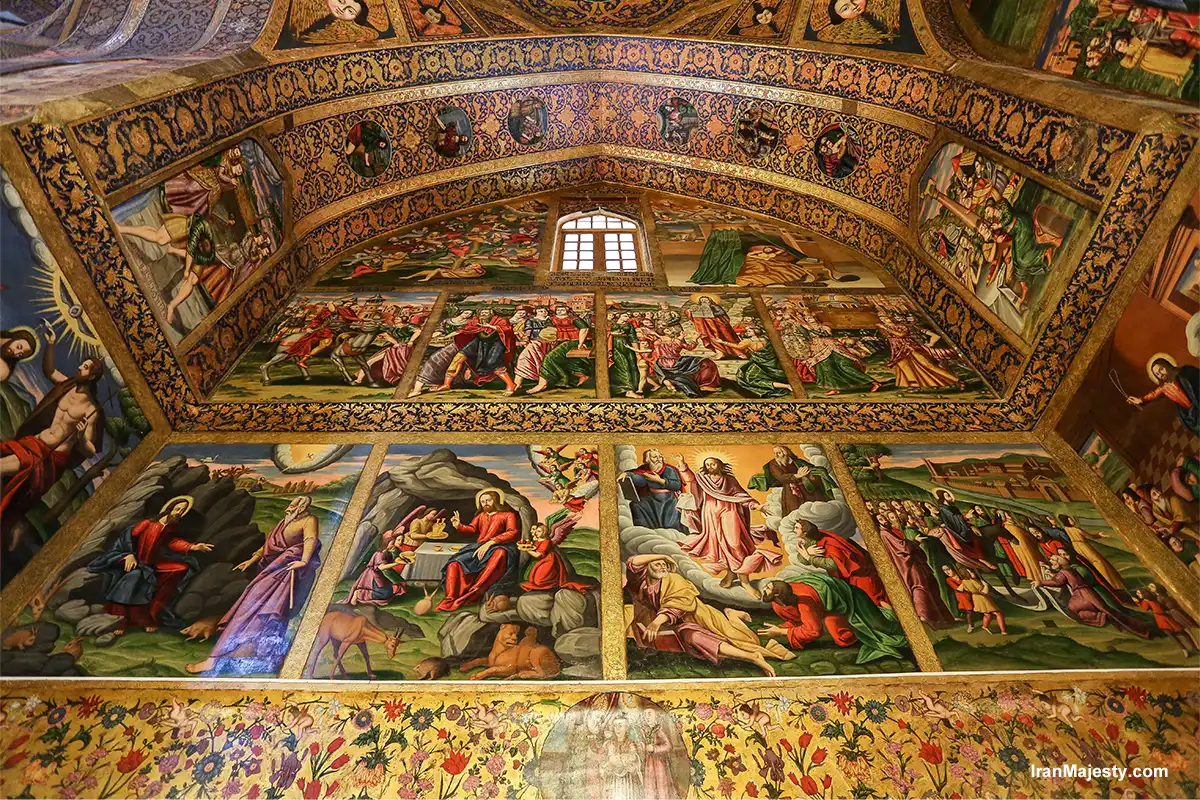As a traveler eager to experience cultural diversity, Sarah chose to visit Iran during December, curious about how Christmas might be celebrated in a predominantly Muslim country. She arrived in Tehran and was delighted to discover a festive atmosphere in the Armenian neighborhoods. Strolling through Valiasr Street, she saw shop windows adorned with Christmas trees, twinkling lights, and ornaments. One evening, Sarah was invited by an Armenian family to join their Christmas dinner. She witnessed the joy of gathering, shared traditional Armenian dishes, and learned about their deep-rooted Christian traditions. The highlight of her experience was attending midnight mass at an Armenian Apostolic Church. The harmonious chants and heartfelt prayers moved her profoundly. Sarah realized that while Christmas is not widely celebrated in Iran, it holds special significance for the Christian community, reflecting their cultural resilience and religious devotion.
The Early Arrival of Christianity in Persia
Christianity has a long and fascinating history in Persia, dating back to the early centuries of the faith. It is believed that Christianity first arrived in the region during the Parthian Empire (247 BCE–224 CE), brought by missionaries and traders traveling along the Silk Road. By the time of the Sassanian Empire (224–651 CE), Christian communities were well established, especially among the Assyrians and Armenians. These Christians were primarily members of the Church of the East, known for their extensive missionary efforts across Asia.
Despite periods of persecution under Zoroastrian rulers who viewed Christianity as a foreign religion, the faith managed to endure and even thrive in certain areas. The construction of churches and the translation of Christian texts into local languages are testaments to its historical influence. For example, the Armenian Apostolic Church has deep roots in Iran, particularly in cities like Isfahan and Tabriz.
Today, historical Christian landmarks such as the UNESCO-listed St. Thaddeus Monastery and Vank Cathedral stand as reminders of this rich heritage. The resilience and cultural contributions of Christian communities in Persia highlight the deep historical ties between the region and one of the world’s oldest religions, making this a story worth exploring and sharing.
Understanding Christmas Traditions in Iran
Do Iranians Celebrate Christmas?
Yes, but the celebrations are primarily observed by Iran’s Christian minority, which includes Armenians, Assyrians, and Catholics. These communities celebrate Christmas as a religious holiday, while non-Christian Iranians occasionally enjoy the festive atmosphere or purchase Christmas-themed items.
How Christians in Iran Celebrate Christmas
Preparations for Christmas in Iran begin early, with families decorating Christmas trees and shopping for gifts. Traditional Christmas meals often feature both Armenian and Iranian dishes, creating a unique blend of flavors. Midnight mass on Christmas Eve is an essential event, with churches beautifully decorated for the occasion. Interestingly, many Iranian Christians, especially Armenians, celebrate Christmas on January 6th, aligning with the Feast of Epiphany.
The Role of Churches in Christmas Celebrations
Iran is home to several Christian churches, particularly in cities like Tehran, Isfahan, and Tabriz, which have significant Armenian and Assyrian populations. Notable examples include Vank Cathedral in Isfahan and St. Sarkis Cathedral in Tehran, both of which are central to the Armenian Apostolic community. Churches in Iran not only serve as places of worship but also play an important role in preserving the cultural and religious heritage of the Christian minority. During holidays like Christmas, these churches host special masses, prayers, and community gatherings, reflecting their vibrant traditions. Despite being a small percentage of the population, Christians in Iran maintain active religious practices and uphold their faith through these sacred spaces. These churches serve as cultural and spiritual hubs, especially during the holiday season. Midnight mass, Christmas carols, and communal prayers make the season spiritually uplifting for the faithful.
A Look at the Christian Community in Iran
According to the 2016 census, there are around 117,700 Christians in Iran, although unofficial estimates suggest the number may be closer to 300,000. The majority are Armenians, followed by Assyrians and other denominations. Despite their small population, Christians in Iran actively preserve their cultural and religious heritage.
“Here’s a fantastic video on Celebrating Christmas in Iran by Reza and Mahsa Travellers. I’m embedding it to provide you with additional context, with full appreciation for the creator’s efforts.”
Language and Greetings
In Persian, “Merry Christmas” is expressed as “کریسمس مبارک” (Kristmas Mobarak), while Armenian speakers say “Շնորհավոր Սուրբ Ծնունդ” (Shnorhavor Surb Tsnund).” These greetings reflect the multicultural essence of Christmas in Iran.
Conclusion: A Unique Cultural Blend
Christmas traditions in Iran offer a remarkable example of cultural coexistence. While the holiday is not a national celebration, its observance among Christian communities showcases a rich blend of faith and tradition. The Armenian and Assyrian influences on Christmas celebrations in Iran highlight the resilience and creativity of these communities in preserving their heritage. Exploring Christmas in Iran provides a deeper understanding of the country’s cultural diversity and religious tolerance. For travelers and cultural enthusiasts, it’s an opportunity to witness a side of Iran that is often overlooked but profoundly meaningful.


0 Comments